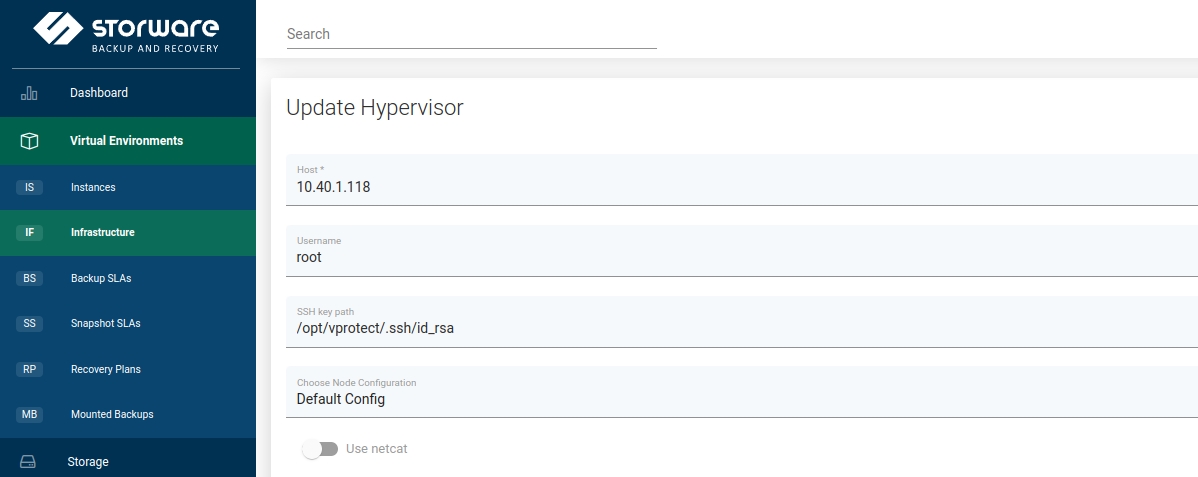SSH public key authentication
General
Instead of using password authentication - anywhere where you're able to provide SSH credentials (hypervisors, VMs applications, etc) you also have the public key alternative.**.
By default, Storware Backup & Recovery uses the /opt/vprotect/.ssh/id_rsa path, however, you also can override it with your own path*.
*(this needs to be owned by vprotect user and make sure it has the 0400 permission set.
**You don't have to pass a passphrase, you can leave this parameter blank.
Example
1. Generate a key or use yours and store it as /opt/vprotect/.ssh/id_rsa (make sure that the vprotect user and group own the file)
example key generation:
[root@vProtect3 vprotect]# sudo -u vprotect ssh-keygen -t rsa -m PEM
Generating public/private rsa key pair.
Enter file in which to save the key (/opt/vprotect/.ssh/id_rsa):
Enter passphrase (empty for no passphrase):
Enter same passphrase again:
Your identification has been saved in /opt/vprotect/.ssh/id_rsa.
Your public key has been saved in /opt/vprotect/.ssh/id_rsa.pub.
The key fingerprint is:
SHA256:86HSLKYwl7maDR7U1oIH1Y6VDtRFNJgHgfdjikg3VnQ vprotect@vProtect3
The key's randomart image is:
+---[RSA 2048]----+
| .o=+XE |
| .o X... |
| . O o |
| .+=.o + |
| .o+=o.oS.. |
| ..o.+.o + . |
| = + + + . |
| . O + o |
| +.+ |
+----[SHA256]-----+2. use ssh-copy-id to upload your public key (as vprotect user) to the KVM host:
3. Check if you're able to log in to the hypervisor using the local vprotect user without being asked for the password:
4. Now you should be able to index VMs regardless of the password set for the hypervisor (the key should be used instead)
5. Provide path to key (default: /opt/vprotect/.ssh/id_rsa) in Storware Backup & Recovery dashboard
